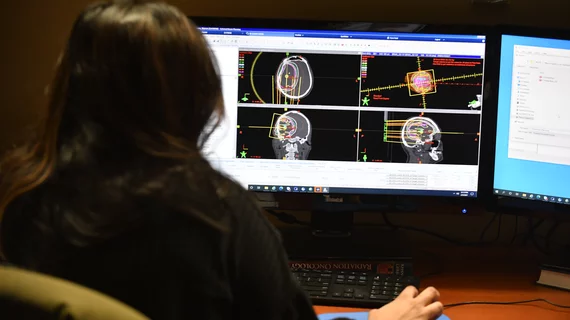Teleradiology medical malpractice more frequently leads to higher payouts, patient death
Medical malpractice in teleradiology more frequently leads to higher payouts and patient mortality, according to new research published Tuesday in Radiology [1].
Problems with communication among providers was a more common contributing factor to such cases in teleradiology (26% of the time) versus traditional radiology (13%). Cases involving radiologists working remotely also are more likely to close with an indemnity payment (59% vs. 41%) and had a higher such payout than in traditional radiology ($339,000 vs. $214,000).
These findings are based on an analysis of 135 teleradiology malpractice cases and 3,474 more in regular radiology, conducted by Harvard Medical School.
“These attributes of teleradiology claims underscore their impact within the medicolegal and patient safety landscape,” Adam C. Schaffer, MD, a professor and internal medicine specialist, and colleagues wrote April 2. “Care provided by means of teleradiology warrants attention from patient safety officials. Optimizing communication between the teleradiologist and on-site clinical team is one way to potentially enhance the safety of teleradiology care,” they added.
Schaffer et al. queried a national malpractice database to gather their information, with results spanning 2010 to 2022. Cases specific to teleradiology were identified through manual review, with telemedicine listed as one of the contributing factors. Patients died more often when rads were working remotely at about 36% of the time (48 of 135) compared to traditional radiology (20% or 685 of 3,474). Cerebrovascular disease also was a more common final diagnosis in the teleradiology cases (10%) when compared with regular radiology (4%). The median National Association of Insurance Commissioners clinical severity scale score was higher for teleradiology claims (at 7 vs. 5), the authors reported. And teleradiology claims were more than twice as likely to arise from adverse events that occurred in the emergency department (42% vs. 16%) and were less likely to be due to adverse occurences in the outpatient setting (36% vs. 61%).
Teleradiology has only grown in popularity since the COVID-19 pandemic and amid staffing challenges across the specialty. In a corresponding editorial [2], Yale radiologist Jonathan L. Mezrich, MD, MBA, called the study “important” while urging peers to consider how the conclusions may reshape deployment of remote readers.
“Schaffer et al. highlight several areas that may, and should, be improved, such as better communication, improved electronic medical record access, and more robust use of overreads (albeit perhaps not realistic in time-sensitive, high-acuity settings),” Mezrich wrote. “These findings may give pause to groups or institutions that are considering engaging teleradiologist services, particularly in specialties of greatest liability and acuity, such as emergency radiology or neuroradiology. Although the authors offered their analysis as guidance for radiologists to decrease the liability of teleradiology, it is conceivable that this study may provide useful ammunition for opponents of this staffing model, and it remains to be seen how this may impact utilization.”
Read much more at the links below.

